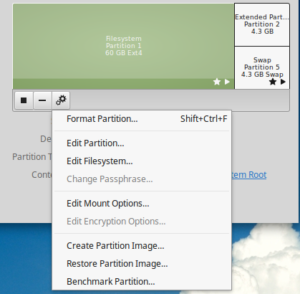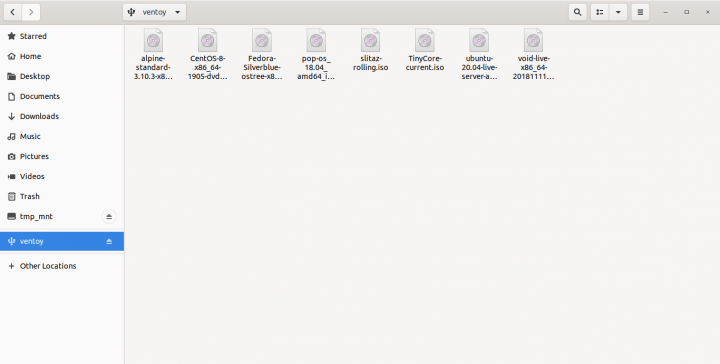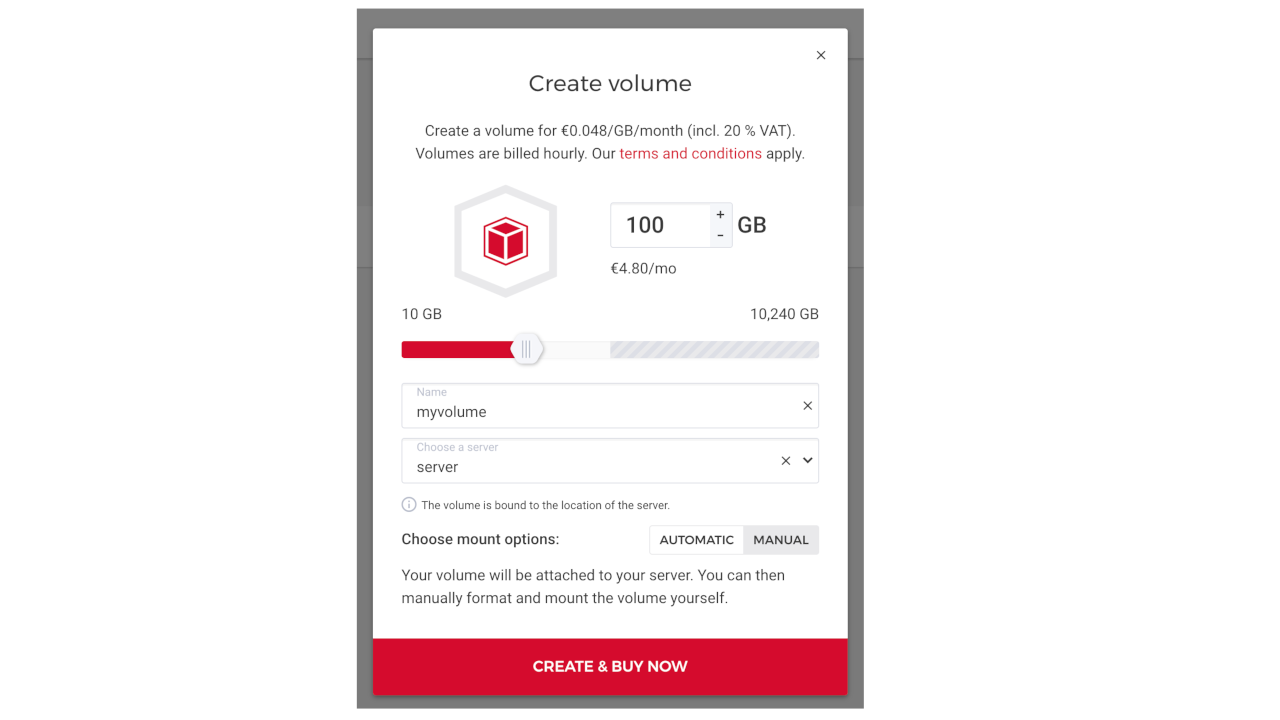41 disklabel type dos
Transferring Hive OS from a flash-drive to SDD/HDD To do this, follow these steps: Detect the drives (flash-drive and SDD/HDD). ... 512 bytes / 512 bytes Disklabel type: dos Disk identifier: 0x244b7fbe Device Boot Start End Sectors Size Id Type /dev/sda1 2048 43007 40960 20M e W95 FAT16 (LBA) /dev/sda2 43008 188786687 188743680 90G 83 Linux /dev/sda3 188786688 234441647 45654960 21.8G 82 Linux ... Increase LVM Partition to Take Up Remaining Space UBUNTU Disklabel type: dos Disk identifier: 0x41577866. Device Boot Start End Sectors Size Id Type /dev/sda1 * 2048 999423 997376 487M 83 Linux /dev/sda2 999424 62914559 61915136 29.5G 8e Linux LVM. Command (m for help): d Partition number (1,2, default 2): 2. Partition 2 has been deleted. Command (m for help): n Partition type
Linux mount command to access filesystems, iso image, usb, network drives 6 commands to list USB devices and check USB ports 1. Journalctl or /var/log/messages 2. lsusb 3. lsscsi 4. lsblk 5. blkid 6. fdisk USB Drive with NTFS File System USB Drive with FAT32 or vFAT File System Mount Network Drive How to unmount file system and other removable devices?

Disklabel type dos
fdisk: manipulate disk partition table - Linux Man Pages (8) Don't erase the begin of the first disk sector when create a new disk label. This feature is supported for GPT and MBR. -c, --compatibility [= mode] Specify the compatibility mode, 'dos' or 'nondos'. The default is non-DOS mode. For backward compatibility, it is possible to use the option without the mode argument -- then the default is used. Use of disklabel, MBR and GPT - UnitedBSD Thinking about MBR, it actually provides the same information, but in a way the other OSs can understand: the full size of the disk, the size and location of the usable portion(s) of the disk and their structure (all the primary partitions whose type is DOS-compatible). Disklabel and MBR are then just two alternative ways to represent the same ... access.redhat.com › node › 2211741How to Resize a Partition using fdisk - Red Hat Customer Portal Prerequisites. A created partition that you know the name of. To check the name, run cat /etc/fstab.The first field is the name of the partition. The only way to change a partition size using fdisk is by deleting and recreating it so ensure that the information on the file system is backed up.
Disklabel type dos. Issue Upgrading to Larger Disks | TrueNAS Community Disk /dev/zd0: 300 GiB, 322122547200 bytes, 629145600 sectors Units: sectors of 1 * 512 = 512 bytes Sector size (logical/physical): 512 bytes / 16384 bytes I/O size (minimum/optimal): 16384 bytes / 16384 bytes Disklabel type: dos Disk identifier: 0x29e43003 Device Boot Start End Sectors Size Id Type /dev/zd0p1 * 2048 999423 997376 487M 83 Linux ... Find All Storage Devices Attached to a Linux Machine fdisk is the Linux command used to perform operations on disks and partitions in Linux. We can use fdisk -l to list all storage devices and their partitions. This command may not work unless it is run as a root user or with sudo: [solve] how to use fdisk to merge on partition into another paritition # fdisk -l Disk /dev/vda: 95 GiB, 102005473280 bytes, 199229440 sectors Units: sectors of 1 * 512 = 512 bytes Sector size (logical/physical): 512 bytes / 512 bytes I/O size (minimum/optimal): 512 bytes / 512 bytes Disklabel type: dos Disk identifier: 0xb26758c8 Device Boot Start End Sectors Size Id Type /dev/vda1 * 2048 197134335 197132288 94G 83 Linux /dev/vda2 197134336 199229439 2095104 ... [SOLVED] Unrecognised disk label - gparted - LinuxQuestions.org Disk /dev/sda: 232.9 GiB, 250059350016 bytes, 488397168 sectors Units: sectors of 1 * 512 = 512 bytes Sector size (logical/physical): 512 bytes / 512 bytes I/O size (minimum/optimal): 512 bytes / 512 bytes Disklabel type: dos Disk identifier: 0x2299b4f8 Device Boot Start End Sectors Size Id Type /dev/sda1 * 2048 484472831 484470784 231G 83 Linux /dev/sda2 484474878 488396799 3921922 1.9G 5 ...
linuxconfig.org › how-to-resize-ext4-rootHow to resize ext4 root partition live without umount on Linux Nov 28, 2020 · Next, create a new partition right on the top of the previous and ensure that you use same starting sector: Command (m for help): n Partition type p primary (0 primary, 0 extended, 4 free) e extended (container for logical partitions) Select (default p): p Partition number (1-4, default 1): First sector (2048-41943039, default 2048): 4096 Last sector, +sectors or +size{K,M,G,T,P} (4096 ... Fdisk command to create and delete partition in Linux Guide 2021 Created a new DOS disklabel with disk identifier 0xc11739be. Command (m for help): When you access the command mode of /dev/sdb, now press "n" command to create a new partition under /dev/sdb with specific size. You can see in the following result. Mount NTFS file system in Debian - GEEKDECODER How to mount a NTFS disk in Debian. Find the disk: # fdisk -l Disk /dev/sda: 232.9 GiB, 250059350016 bytes, 488397168 sectors Disk model: ST3250310AS Units: sectors of 1 * 512 = 512 bytes Sector size (logical/physical): 512 bytes / 512 bytes I/O size (minimum/optimal): 512 bytes / 512 bytes Disklabel type: dos Disk identifier: 0x84c02518 Device Boot Start End Sectors Size Id Type /dev/sda1 ... Tutorial - Create and use disks for scale sets with Azure CLI - Azure ... When you select a disk size, the value is rounded up to the next type. For example, if the disk size is less than 128 GB, the disk type is P10. If the disk size is between 129 GB and 512 GB, the size is a P20. Over, 512 GB, the size is a P30. Premium disk performance
Linux fdisk command and examples - Computer Hope In a DOS-type partition table, the starting offset and the size of each partition is stored in two ways: as an absolute number of sectors (given in 32 bits), and as a Cylinders/Heads/Sectors triple (given in 10+8+6 bits). The former is OK; with 512-byte sectors, this works up to 2 TB. The latter has two problems. Fdisk Command in Linux (Create Disk Partitions) | Linuxize If you have a disk of 2 TiB or larger, use GPT. MBR has a limit of 4 primary partitions. If you need more partitions, one of the primary partitions can be set as an extended partition and hold additional logical partitions. With GPT, you can have up to 128 partitions. GPT doesn't support extended or logical partitions. Create Boot Partition Layout for a Raspberry Pi - The Tech Journal Open fdisk on your card. fdisk /dev/sda Press "n" to create a partition. Press "p" to make it a primary partition. Press "1" to make it the first partition in the table. Press to accept the default on start sector. Type +size to choose the size. In my case I want 1GB, so I'll type "+1G". After it's created, press "a" to make it bootable. 1190726 - Fdisk created a new DOS disklabel in the wrong partition. Device does not contain a recognized partition table. The size of this disk is 5.5 TiB (6001174060544 bytes). DOS partition table format can not be used on drives for volumes larger than 2199023255040 bytes for 512-byte sectors. Use GUID partition table format (GPT). Created a new DOS disklabel with disk identifier 0x7c9f38a4. ******<*********!!!
access.redhat.com › node › 2211741How to Resize a Partition using fdisk - Red Hat Customer Portal Prerequisites. A created partition that you know the name of. To check the name, run cat /etc/fstab.The first field is the name of the partition. The only way to change a partition size using fdisk is by deleting and recreating it so ensure that the information on the file system is backed up.
Use of disklabel, MBR and GPT - UnitedBSD Thinking about MBR, it actually provides the same information, but in a way the other OSs can understand: the full size of the disk, the size and location of the usable portion(s) of the disk and their structure (all the primary partitions whose type is DOS-compatible). Disklabel and MBR are then just two alternative ways to represent the same ...
fdisk: manipulate disk partition table - Linux Man Pages (8) Don't erase the begin of the first disk sector when create a new disk label. This feature is supported for GPT and MBR. -c, --compatibility [= mode] Specify the compatibility mode, 'dos' or 'nondos'. The default is non-DOS mode. For backward compatibility, it is possible to use the option without the mode argument -- then the default is used.







Post a Comment for "41 disklabel type dos"